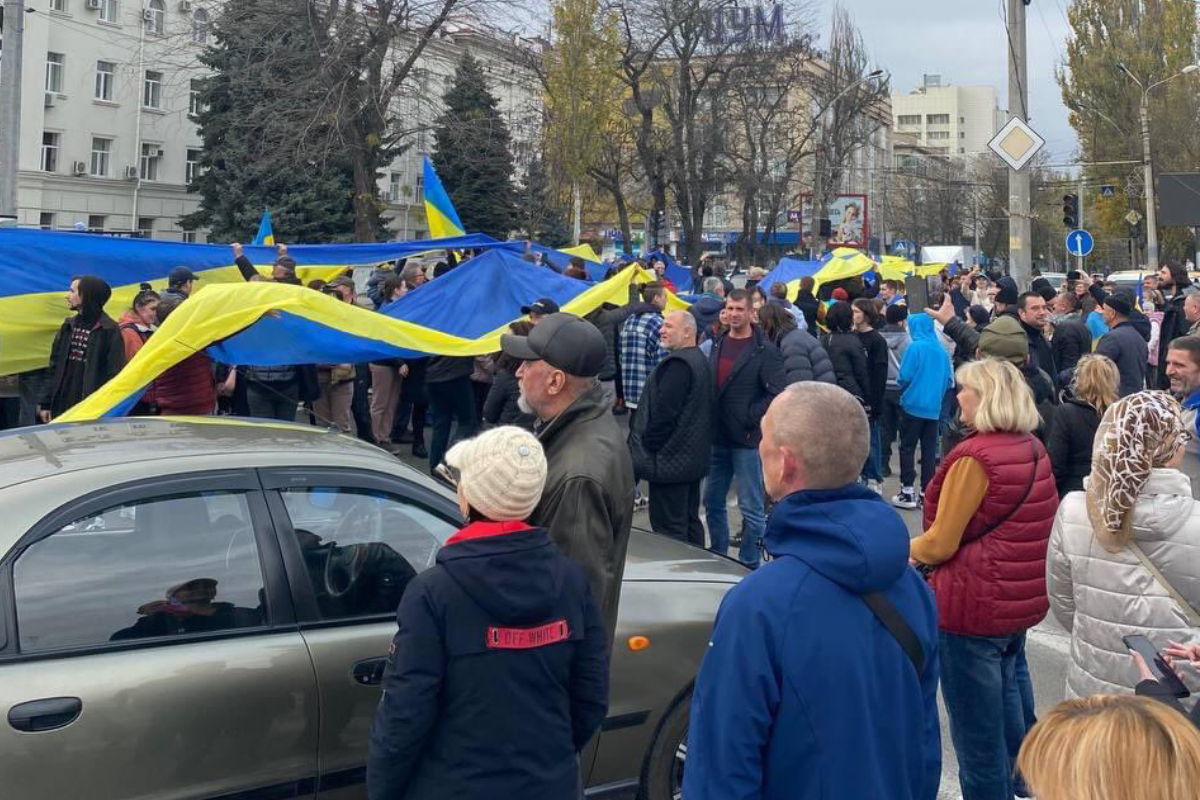

Author and analyst David Devadas argues that Indian wargamers must take lessons on how Chinese supply lines could be disrupted – and Indian diplomats must ensure that Western and Asian countries share intelligence that allows pinpoint targeting.

So, yes, Russia’s withdrawal from Kherson is a big feather in Ukraine’s cap, and in the caps of its Western allies too. Sure. But what does it mean for us in India?
We must learn lessons. One is about battlefield strategies. The other is about armament strategies – which boil down to diplomatic strategies, or rather, strategic alignments.
Let’s deal with battlefield strategy first. Ukraine won Kherson without any fighting within Kherson city. There was a lot of speculation last week about whether the Russian withdrawal was a trap, and about Russian soldiers lurking in civilian clothing in the city, but all that turned out to be just speculation. There was no fighting in the city.
Now, that’s huge, for it is one of the best-known rules of thumb in warfare that urban warfare costs vast numbers of lives, including those of civilians, and results in horrifying destruction. Ukraine avoided all that.
How? It disrupted Russia’s supply lines.
That brings us to another basic rule of thumb in warfare: professionals focus on logistics. In recent weeks, Russia had found it increasingly tough to supply and feed its troops in not only Kherson city, but all over the right bank of the Dnipro river.
The most important reason for that was the explosion on the Kerch bridge, which connects the Crimean peninsula to mainland Russia. It runs directly west from Crimea, and is therefore the farthest away from Ukrainian forces. It was nevertheless blown up five weeks ago.
The Kerch bridge was a vital supply line for Russian forces, not only protecting Crimea but also those in southern Ukraine, including Kherson. You see, ever since the Soviet era, Russian logisticians have depended on railway supply lines far more than truck convoys. And there were railway lines over the Kerch bridge.
After dealing with Kerch, Ukrainian forces bombarded transport convoys coming towards Kherson and the southeast corner of Ukraine. They used very accurate long-range drones and missiles, backed by pinpoint location tracking (supplied largely by Ukraine’s Western allies, no doubt). That resulted in even truck convoys sometimes being decimated.
The PLA has extremely long supply lines
So, what’s the lesson in this for India? In case of a war with China – which had belligerently installed troops and armaments in forward positions in Ladakh and other points along India’s eastern border – Indian strategists could seek to disrupt the extremely long supply lines the front-line PLA would have to depend on.
Those supply lines must ply over mountains and deserts in Tibet and Xinjiang. In some areas, there is only one major road or railway leading to the forward area, traversing very difficult terrain. In that terrain, quickly constructing alternatives would be tough if those roads, bridges, or railways were hit.
The same goes for the Karakoram Highway, which connects China to Pakistan – passing right across the erstwhile states of Jammu and Kashmir. Pakistan now uses a range of Chinese armaments, including aircraft and heavy weapons. Ammunition and parts for these would have to be rapidly and efficiently supplied in case Pakistan were to get into a war situation. Those supplies would either have to come across those extremely long supply lines or via the Indian Ocean.
Intelligence and high-tech armaments
The second lesson for Indian strategists to learn from the restoration of Kherson to Ukraine is that Western intelligence, and artillery, have been crucial to Ukraine’s successes – apart from the immense training effort that has gone into preparing Ukrainian forces over the past several years.
NATO is not on the battlefield in Ukraine, and yet it is intricately involved. As a Russian, with whom I discussed the war a few weeks ago, said, quite plaintively: ‘Russia is fighting NATO’.
Aid to India would not be at that level, but policymakers must ensure that India can get some level of Western support of this sort in case of a war with China. Even a lesser degree of assistance could make a crucial difference. At least, intelligence inputs to locate and precisely attack enemy traffic, troop concentrations, or installations, should be forthcoming.
Diplomatic outreach should therefore be a top priority, for this objective. In case it is up against China, India could seek to link up for intelligence and other sorts of war-related cooperation with not only the West, but also potentially with Japan, South Korea, and Viet Nam.
Partisans and backers
A third lesson lurks in the shadows of Kherson: the role of partisans. Some top officials and, no doubt, some ordinary residents of Kherson opted at the beginning to back Russia. So, they did not blow up the Antonovsky bridge when Kiev told them to do so, at the beginning of Russia’s special military operation. They thus allowed Russia to take over the city, and the area around it on the right bank.
On the other hand, Ukrainian partisans are said to have played a role in helping their army take back control since operations began in the summer.
The way Ukrainian soldiers have been welcomed into the city over the past couple of days shows that most of Kherson’s residents think of themselves as Ukrainians. Many of them dared to demonstrate even in front of Russian tanks during the early days after Russia took over.
Indian strategists must guard against fishy games being played before or during a putative war. When push comes to shove in a war situation, many people even in otherwise disaffected areas have backed Indian forces against enemy soldiers during wars, whatever their rhetoric may have been in pre-war periods. It is wily gamesters who pose problems.
David Devadas is a journalist and security, politics and geopolitics analyst.
Disclaimer: Views expressed above are the author’s own